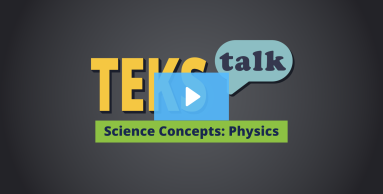
Knowledge and Skills Statement
The further explanation is designed to be a resource for educators that helps them better understand the topic their students are learning. Further explanations may be written at a more complex level than would be expected for students at the grade level.
There are two variations of the photoelectric effect.
a) In the image labeled (a), a photon collides with an electron, transferring energy. If the threshold frequency is met, the electron is ejected. This is better illustrated in the image below.
b) In the image labeled (b), a photon collides with an electron, sending the electron up an energy level. When the electron returns to its regular, lower-energy state, it emits a photon at a specific frequency with a specific amount of energy. The frequency and amount of energy can be calculated and predicted, as illustrated in the image below.
Research
Sayer, Ryan, Alexandru Maries, and Chandralekha Singh. "Quantum Interactive Learning Tutorial on the Double-slit Experiment to Improve Student Understanding of Quantum Mechanics." Physical Review Physics Education Research 13, no. 1 (2017): 010123. https://doi.org/10.1103/PhysRevPhysEducRes.13.010123
Summary: The authors investigated student difficulties with quantum mechanics pertaining to the double-slit experiment in various situations that appear to be counterintuitive and contradict classical notions of particles and waves. Here they discuss the development and evaluation of a research-validated Quantum Interactive Learning Tutorial (QuILT) which makes use of an interactive simulation to improve student understanding of the double-slit experiment and strives to help students develop a good grasp of foundational issues in quantum mechanics.
